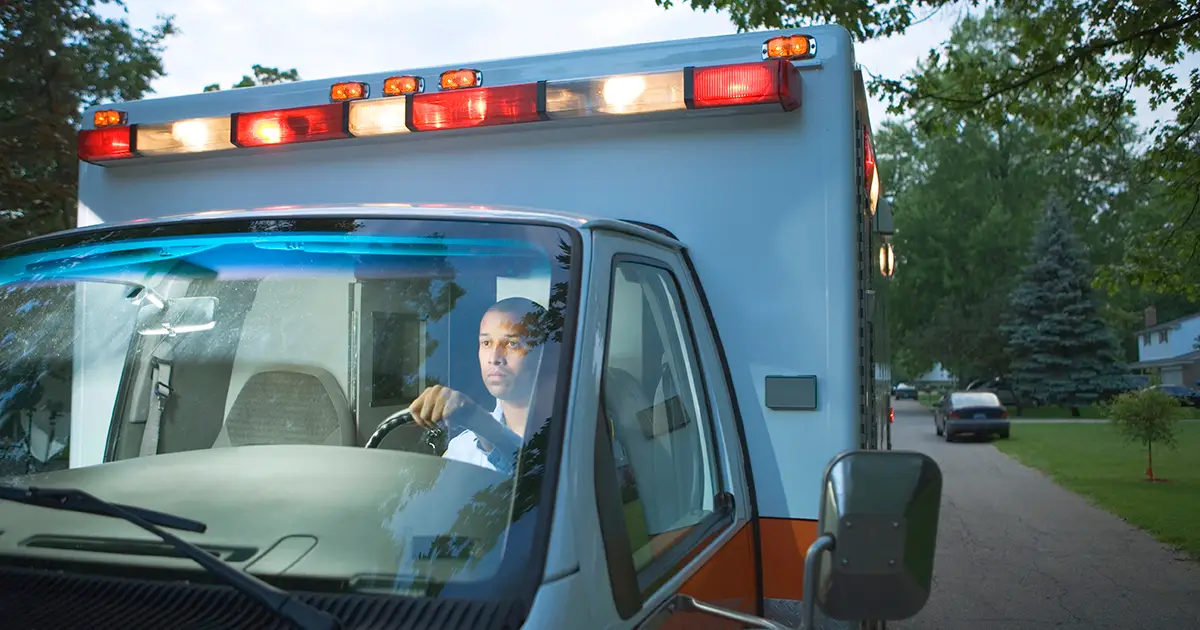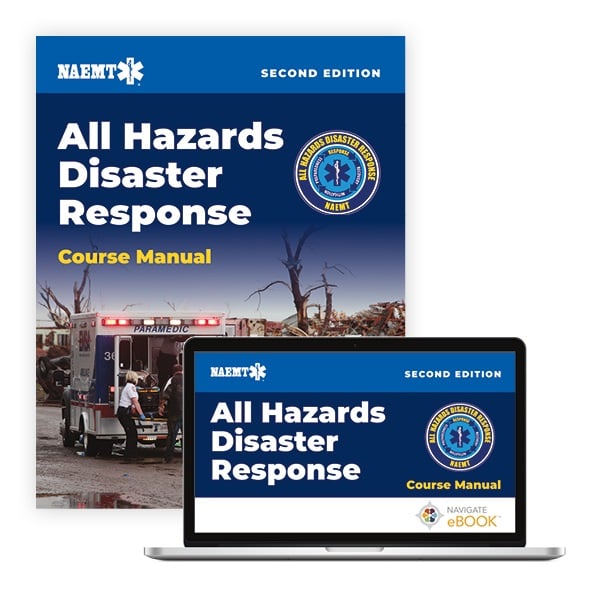Training EMS to Respond to an Active Shooter Incident

In some communities a month doesn’t go by without a response to a subject with a gun. Many of these calls end up with few, if any, injuries or deaths and all responders go home safe to their families at the end of their shift. Most of these calls do not make the TV or newspaper although some do end hup on social media.
Incidents involving multiple injuries or fatalities are likely to be all over the media for days/weeks. Sometimes years. For example, two years after the 2022 Robb Elementary School shooting in Uvalde, Texas, the officers were cleared in the shooting and the police chief suddenly resigned.
As is often the case, on most responses, the decisions made in the first few moments can have a significant impact on the course of the incident and safety of the victims and responders. Let’s review what is known about mass shooting incidents as well as the role of EMS during a mass casualty incident.
Some Terms Defined
An active shooter – is defined by U.S. federal government agencies as “an individual actively engaged in killing or attempting to kill people in a confined and populated area.” The FBI expanded this definition to include more than one individual in an incident and omits the word confined as the term excludes incidents that occurred outside of buildings.
A mass killing is defined as “three or more killings in a single incident” using the federal definition.
A barricaded individual is someone who is the focus of a law enforcement intervention effort, has taken position in a physical location that does not allow immediate law enforcement access, and is refusing law enforcement orders to exit. A barricaded subject is a person who is not suspected of committing a crime, whereas, a barricaded suspect is a person who is suspected of committing a crime.
When evaluating shooting incidents to determine if they met the FBI’s active shooter definition, researchers included shootings:
- in public places,
- occurring at more than one location,
- where the shooter’s actions were not the result of another criminal act, resulting in a mass killing,
- indicating apparent shooter spontaneity,
- where shooter searched methodically for potential victims, and
- that appeared focused on injury to people (not buildings or objects).
Excluded from this data were shootings due to: self-defense, gang violence, drug violence, contained residential or domestic disputes, controlled barricade/hostage situations, crossfire as a byproduct of another ongoing criminal act, and an action that appeared not to have put other people in peril.
Review of the Role of EMS at a Mass Casualty Incident
In 2022 there were 50 active shooter incidents involving 313 casualties (100 killed and 213 wounded). If EMS providers are the first arriving at an active shooter incident, it is not an EMS provider’s responsibility to go in after the shooter. Aside from recent rumblings from providers that have strong feelings around EMS providers being allowed to “carry a weapon while on duty” the vast majority of EMS agencies do not allow weapons on duty.
Public Safety Group polled its followers on whether or not EMS providers should be armed. The results were mixed, with the “nos” slightly edging the “yes’s.”
However, notify dispatch that law enforcement needs to be dispatched immediately and as the Incident Commander begin considering the following needs (from a safe zone):
- Command post: initial location and assumption of command till law enforcement arrive.
- Hazard evaluation
- Staging area location
- Operations that will be required (ALS, BLS, FD, law enforcement, other medical needs)
- Areas that will be required (triage, treatment, transport groups and sections)
- Patient count (number and tag colors/priority)
The most important immediate concern will be that of safety of responders, those running away from the hot-zone (if any) and proper positioning of any arriving units out of the range of fire. Once law enforcement has arrived and incident command has been transferred, position the Medical Commander in the same command post (location) to closely coordinate efforts with the other emergency services.
 Critical Incident Review (CIR)
Critical Incident Review (CIR)
Recently, the U.S. DOJ released their report, Critical Incident Review: Active Shooter at Robb Elementary School in Uvalde, Texas which analyzed the May 24, 2022 incident. The incident resulted in the death of 21 (19 children and 2 teachers) as well as 17 wounded (including 3 law enforcement officers).
Based on the facts, the CIR team identified several critical failures and breakdowns prior to, during, and after the response. The report analyzed cascading failures of leadership, decision-making, tactics, policy, and training that contributed to those failures and breakdowns. The “CIR team pointed out generally accepted practices for an effective law enforcement response to a similar mass shooting and offered recommendations in hopes that in the future, law enforcement would be able to act quickly, save lives, and prevent injuries to the greatest extent possible.”
The report identified that the most significant failure was that initial responding officers should have immediately recognized an active shooter incident and pushed forward (using available resources and equipment) continuously toward the threat until entry was made into 111/112 and the shooter eliminated.
Failures identified in the report focused on: leadership, command, coordination, and communications. Radio communications were a problem as well as confusing radio reports. Despite ultimately hundreds of responders at the scene, the majority of officers from different law enforcement agencies had never trained together. Many on scene responders did not realize there were still children in the classrooms since it was so quiet, lights were turned off, exterior-facing shades/blinds were drawn, classroom door windows covered, and no sign of human presence in classrooms was observed (as per the school’s lockdown policy). Future training should include an understanding of the school’s mandated lockdown procedures.
There are many teaching moments to learn from reviewing the actual report. If you are concerned about this threat in your response area, I highly recommend you take the time to review it.
Train Often: Use Realistic Scenarios, and Train Together (PD, FD, EMS)
How can we best prepare for a response to an assailant with a gun?
- Learning the law enforcement SOPs and tactics for these calls is a good starting point.
- Incident command training is not just some online course you took as a prerequisite for your EMT course, it needs to become a daily operational practice.
- Police, Fire, and EMS providers training together with plenty of practice using realistic scenarios, both small and large, is absolutely essential.
- Remember when you are stressed, on arrival at the scene of a call involving an assailant with a gun, you will resort to how well you have trained and it will be less likely that you may make inappropriate decisions that can put everyone involved in more danger.
- Seek out those innovative active shooter training programs that educate all responders and their leaders together rather than those “law enforcement only” programs of the past.
Back in the days of Columbine (1999), it was not uncommon for initial law enforcement to secure perimeters and radio for a SWAT response to take out the shooter. Medical personnel waited in a “safe” location (cold zone) for the scene to be secured, often involving room-by-room searches, which could take hours. All the while gunshot victims who might have been potentially salvageable proceeded to bleed to death. Over the years we have learned that the best way to save as many lives as possible involves an aggressive initial law enforcement response to go after the shooter as well as training of all law enforcement personnel in the use of commercial tourniquets and techniques to stop bleeding.
Current training programs for medical providers involve entering areas where the shooter is known to be absent (warm zone) together with law enforcement as their “shield” to rapidly assess and manage life-threats and rapidly remove patients to a casualty collection point. For this approach to be successful it involves training together and plenty of practice scenarios encountered in the teams that work together on the streets every day.
Following an increase in mass shootings, the National Fire Protection Association (NFPA) formed a committee of law enforcement, fire officials, and EMS leaders to create NFPA 3000, Standard for an Active Shooter/Hostile Event Response (ASHER) Program. One significant change in this standard is properly equipped (ballistic vest and helmet) EMS personnel, referred to as a rescue task force (RTF) that may enter an active shooter scene once an area has been cleared by law enforcement to offer immediate care to the injured. This RTF concept acknowledges that injured patients may die without immediate care.
If your agency has not moved to current approaches to an active shooter response perhaps it is time to get together with law enforcement and review some of the best practices from communities that already have experience and training to share.
Finally, in this article I have purposefully chosen to not name the perpetrators of active shooter incidents in support of the Don’t Name Them campaign. To learn more visit dontnamethem.org.
Active shooter incidents can happen in any community. A couple of days prior to the 2018 active shooter incident that killed 17 at the Marjory Stoneman Douglas High School, the chamber of commerce named Parkland the safest city in Florida. Be prepared, train with other emergency response agencies before one occurs in your community.
All Hazards Disaster Response, Second Edition
With All Hazards Disaster Response, Second Edition in just eight hours, clinicians learn to analyze potential threats, assess resources, and create a solid response plan to save lives.
Request Your Review CopyRelated Content:
- Analysis of an Ambulance Crash: A Case Study in Why EMS Vehicle Operator Safety Should be at the Top of Your Agency’s Plans
- Are You Teaching Prehospital Blood Transfusion? This Is Why You Should Be.
- Creating Realistic Pediatric Emergency Simulations: Best Practices for EMS Training
About the author:
Bob Elling, MPA, Paramedic (retired) – has been a career paramedic, educator, author, and EMS advocate since 1975. He was a paramedic with the Town of Colonie EMS Department, Albany Times Union Center, and Whiteface Mountain Medical Services. He was also an Albany Medical Center Clinical Instructor assigned to the Hudson Valley Community College Paramedic Program. Bob has served as National/Regional Faculty for the AHA and involved in many successful life-saving legislative campaigns with the You’re the Cure Network. He also served as paramedic and lieutenant for New York City EMS, a paramedic program director, and the associate director of New York State EMS Bureau. He has authored hundreds of articles, videos, and textbooks to prepare EMS providers for their career. Bob is the ECSI Medical Editor for the CPR and First Aid Series, Co-Author of EVOS, and Co-Lead Editor of Nancy Caroline’s Emergency Care in the Streets.
